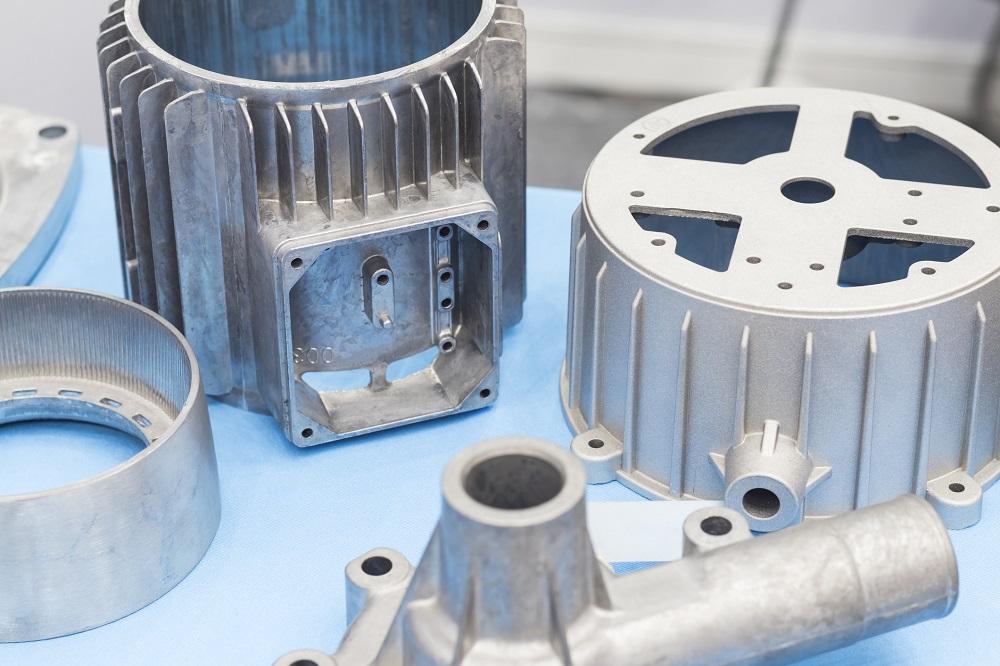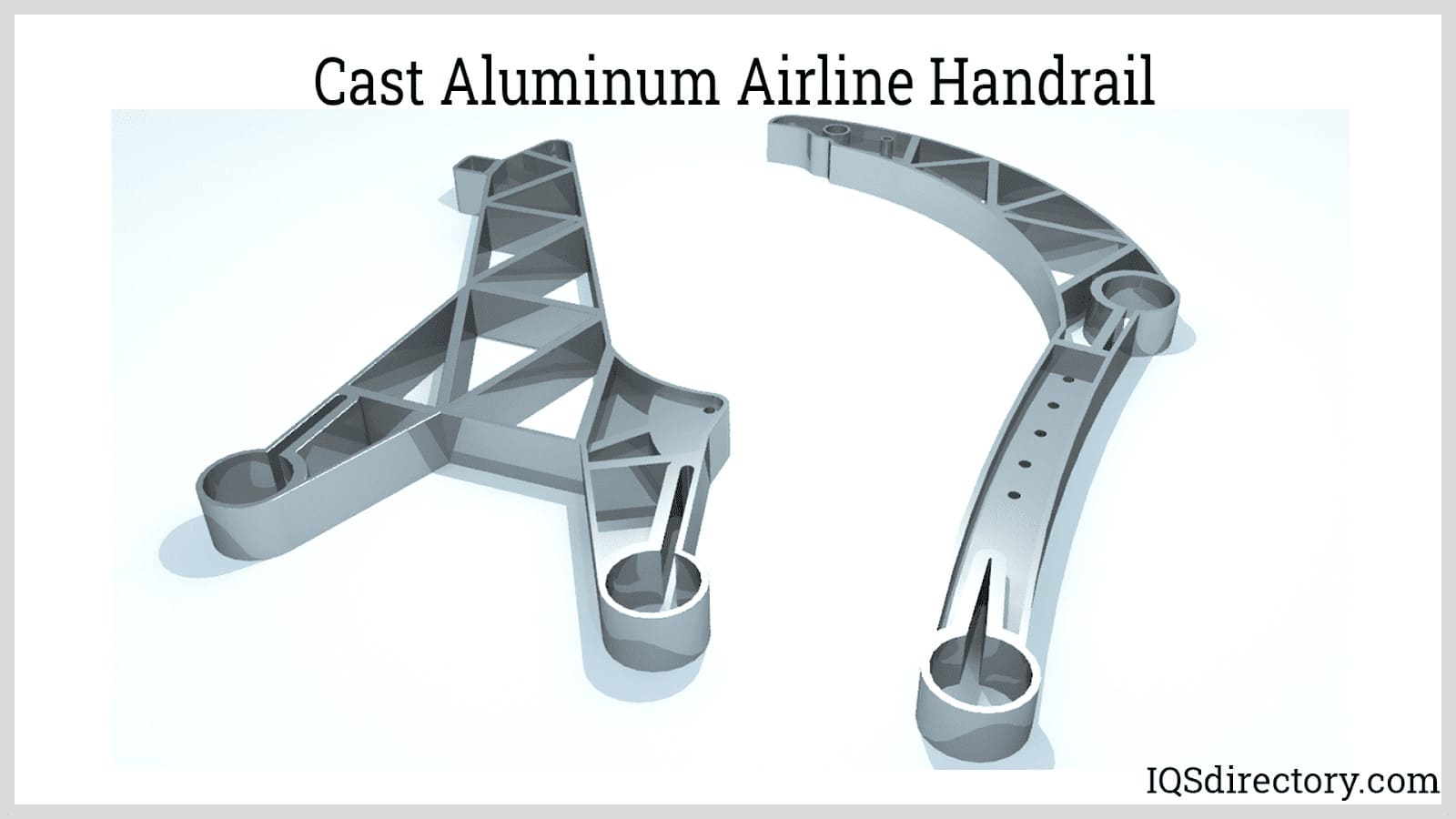Exploring the Perks and Techniques of Aluminum Casting in Modern Manufacturing
Aluminum casting has become a critical strategy in modern-day production. Its light-weight homes improve energy efficiency and lower transport costs. In addition, developments in casting techniques allow elaborate designs and rapid prototyping. Nonetheless, the advantages expand past simple efficiency. The sustainability of aluminum casting processes offers significant implications for numerous markets. Recognizing these elements can reveal the transformative effect of aluminum in modern manufacturing practices. What further developments could redefine its role?
The Lightweight Advantage of Aluminum Casting
Aluminum casting offers a considerable light-weight advantage that is transforming markets reliant on durable yet workable products. This property is specifically beneficial in industries such as automobile and aerospace, where every ounce counts in performance and gas performance. The lowered weight of aluminum parts permits enhanced handling, reduced transportation costs, and enhanced power efficiency during procedure. Unlike larger metals, aluminum supplies a balance of strength and agility, making it a perfect choice for complex applications that demand high performance without sacrificing architectural honesty. Additionally, the corrosion resistance of aluminum extends the lifespan of actors components, lowering the requirement for regular replacements. This mix of light-weight characteristics and toughness settings aluminum casting as a crucial technology in contemporary manufacturing procedures, motivating technology and supporting the advancement of advanced items that satisfy the developing needs of different markets.
Enhanced Style Versatility and Complexity
Layout versatility and complexity are noticeably improved with making use of aluminum casting, enabling makers to produce intricate forms and forms that were previously unattainable with standard approaches. This capacity makes it possible for the manufacturing of elements with in-depth geometries, such as complex interior passages and thin-walled structures, which can notably enhance the efficiency of the end product.
Moreover, aluminum casting strategies, such as die casting and sand casting, promote quick prototyping, allowing designers to repeat and refine their principles swiftly. The ability to generate personalized mold and mildews likewise adds to far better placement with specific style requirements, lowering product waste and reducing the demand for considerable machining.
In addition, the lightweight nature of aluminum matches its layout versatility, as it permits both visual appeal and useful efficiency. In general, the advancements in aluminum casting provide makers with the devices to press the boundaries of design, fostering technology across various markets.

Superior Thermal and Electric Conductivity
Aluminum's exceptional thermal and electrical conductivity makes it an important material in different production applications. Contrasted to other steels, aluminum supplies substantial advantages, particularly in heat dissipation and electric effectiveness. Aluminum Castings. This residential or commercial property enables its widespread use in industries ranging from vehicle to electronics, improving general efficiency and integrity
Thermal Conductivity Advantages
A vital advantage of aluminum casting exists in its exceptional thermal and electrical conductivity, making it an excellent choice for various applications in modern-day production. The high thermal conductivity of aluminum allows for reliable heat dissipation, which is vital in markets such as automotive and electronics. Elements crafted from aluminum can efficiently take care of temperature changes, prolonging the lifespan of products and boosting performance. This quality also allows manufacturers to create light-weight designs without jeopardizing thermal performance. Additionally, aluminum's ability to stand up to thermal biking better solidifies its position in demanding atmospheres. As sectors significantly prioritize energy performance and efficiency, the thermal conductivity benefits of aluminum casting come to be increasingly considerable in driving technology and sustainability.
Electric Conductivity Applications
The electric conductivity of aluminum enhances its thermal homes, making it a useful product in different applications within contemporary production. This conductivity allows effective power transfer, which is crucial in electric elements such as electrical wiring, adapters, and circuit card. Aluminum's lightweight nature additionally improves its appeal in applications where decreasing weight is important, such as in aerospace and automobile industries. Additionally, aluminum casting allows for the development of intricate forms, maximizing the performance of electrical devices. The product's resistance to deterioration and oxidation likewise adds to long life in electric atmospheres, making certain integrity. Generally, aluminum's remarkable electric conductivity positions it as a recommended option in markets that demand high performance and effectiveness in their electric applications.
Contrast With Other Steels
While aluminum is renowned for its remarkable thermal and electrical conductivity, it is vital to compare its residential or commercial properties with those of other steels to understand its benefits completely. Copper, for instance, displays even greater electrical conductivity, making it better in particular applications like wiring. Nevertheless, copper's weight and cost can restrict its use. On the other hand, aluminum provides a favorable balance of conductivity, weight, and price, making it suitable for many production applications. Additionally, aluminum's thermal conductivity is normally above that of stainless-steel and titanium, which are often utilized in high-temperature environments. Inevitably, aluminum stands out not just for its conductivity but likewise for its light-weight and corrosion-resistant homes, making it a functional choice in contemporary production.
Cost-Effectiveness and Decreased Product Waste
Making the most of cost-effectiveness and lessening material waste are necessary benefits of aluminum casting in modern manufacturing. Aluminum's light-weight nature adds to lower delivery prices and power consumption during production. Furthermore, its superb recyclability means that scrap material produced during the casting process can be recycled, substantially lowering the overall material costs.
Furthermore, aluminum casting methods commonly enable intricate forms to be generated with less secondary operations, which improves the manufacturing process and lowers labor expenditures. The capacity to develop specific parts reduces the need for excessive machining, more minimizing waste.
Companies adopting aluminum casting take advantage of decreased production time and increased efficiency, leading to total price financial savings. This mix of reduced product expenses, effective recycling techniques, and effective production procedures placements aluminum casting as a monetarily advantageous choice in the competitive landscape of modern manufacturing.
Innovations in Aluminum Casting Techniques
Recent improvements in aluminum casting techniques are changing the manufacturing landscape. Advancements such as the assimilation of additive production, boosted mold designs, and environmentally friendly casting procedures are driving performance and sustainability. These developments not just enhance item high quality but additionally decrease ecological impact in the aluminum casting sector.
Additive Manufacturing Assimilation
Additive manufacturing is changing aluminum casting methods by making it possible for the manufacturing of complicated geometries and light-weight structures that were formerly unattainable. This integration permits producers to utilize 3D printing technologies to develop intricate mold and mildews and cores, which promote the casting of comprehensive layouts with enhanced precision. In addition, additive production reduces product waste and shortens lead times, making it an extra lasting and effective strategy. Consequently, business can react much more quickly to market demands and personalize items to meet certain consumer requirements. This synergy in between additive production and aluminum casting not just enhances style versatility yet also settings makers to introduce continuously, driving improvements in performance and item efficiency within the competitive landscape of modern manufacturing.

Improved Mold Style
As manufacturers seek to boost performance and product quality, developments in mold style have arised as an essential consider modern aluminum casting techniques. Advanced mold materials, such as silicon carbide and graphite, enhance thermal conductivity and resilience, enabling faster cooling and enhanced surface finishes. Additionally, the integration of computer-aided design (CAD) technology enables precise mold and mildew geometries, facilitating intricate forms that were formerly challenging to accomplish. Developments like 3D-printed molds additionally give fast prototyping abilities, decreasing lead times significantly. Additionally, modular mold and mildew styles permit easier changes and repairs, lessening downtime throughout manufacturing. Jointly, these enhancements not just streamline manufacturing processes but likewise contribute to the overall high quality of aluminum cast items, satisfying the evolving demands of different sectors.
Eco-Friendly Casting Processes
While the aluminum casting market remains to advance, a growing focus on sustainability has actually brought about the growth of environmentally friendly casting procedures. These cutting-edge methods aim to minimize ecological impact by decreasing waste and power consumption. One noteworthy approach includes making use of recycled aluminum, which significantly reduces the carbon footprint connected with resources extraction. In addition, improvements in mold and mildew materials and layouts permit for much more reliable heat transfer, reducing energy needs during manufacturing. Water-based coverings and binders replace traditional solvents, additionally reducing damaging emissions. In addition, some suppliers are taking on closed-loop systems, making certain that waste products are reused within the production cycle. Collectively, these green casting processes not just improve sustainability however likewise add to an extra responsible manufacturing helpful hints landscape.
Sustainability in Aluminum Casting Processes
Sustainability in aluminum casting processes has become a focal factor for manufacturers intending to lower their environmental effect. The sector is increasingly adopting methods that minimize waste and improve resource efficiency. One substantial strategy involves using recycled aluminum, which needs only a portion of the power needed to generate brand-new steel from ore. This not just preserves sources but additionally minimizes greenhouse gas exhausts related to production.
Innovations in modern technology have actually led to even more energy-efficient casting techniques, such as low-pressure and gravity casting, which maximize material usage and decrease energy intake. Aluminum Castings. Suppliers are also applying closed-loop systems that permit the recycling of scrap product created during the casting process. Additionally, the use of environment-friendly coverings and lubricating substances better adds to an extra lasting operation. In general, get redirected here these campaigns mirror a commitment to environmental stewardship while keeping the high quality and efficiency of aluminum casting
Applications of Aluminum Casting Across Industries
Aluminum casting locates extensive applications across numerous markets as a result of its lightweight, stamina, and flexibility. In the auto field, aluminum spreadings are used to create engine blocks, transmission real estates, and wheels, improving fuel performance while reducing emissions. The aerospace market utilizes aluminum castings for architectural elements, taking advantage of their high Discover More Here strength-to-weight ratio, which is vital for flight safety and performance.
In the customer electronics sector, aluminum spreadings are made use of for housing and structural components, giving toughness and visual allure. Furthermore, the building industry leverages aluminum spreadings for architectural components and fixtures, maximizing their resistance to rust.
Furthermore, the marine sector incorporates aluminum castings in boat frames and engine parts, showing its suitability for rough settings. In general, the varied applications of aluminum casting underscore its significance in modern-day manufacturing, contributing to development and performance throughout numerous areas.
Regularly Asked Inquiries
What Are the Usual Alloys Made Use Of in Aluminum Casting?
The usual alloys made use of in aluminum casting consist of 413, 356, and A380. These alloys are valued for their exceptional fluidness, stamina, and rust resistance, making them suitable for various applications in manufacturing and design.
Exactly How Does Aluminum Casting Compare to Other Casting Methods?
Aluminum casting offers one-of-a-kind benefits over various other casting techniques, such as lighter weight, outstanding corrosion resistance, and superior thermal conductivity. It also enables detailed styles and faster production times compared to typical products like iron or steel.
What Is the Common Lifespan of Aluminum Cast Products?
The regular life expectancy of aluminum cast products differs, typically ranging from 20 to half a century, depending upon factors such as ecological problems, maintenance, and details applications. Appropriate care can substantially prolong their toughness and performance.
Exist Any Type Of Health Threats Related To Aluminum Casting?
The question of health and wellness risks related to aluminum casting develops due to possible exposure to aluminum dirt and fumes. Extended inhalation might result in respiratory system problems, emphasizing the relevance of suitable precaution during the casting procedure.
Exactly How Can Defects Be Reduced in Aluminum Casting?
To decrease problems in aluminum casting, producers can apply rigorous quality assurance steps, enhance mold layouts, maintain correct temperature control, make use of ideal alloy compositions, and use efficient cleansing strategies to guarantee a defect-free casting procedure.